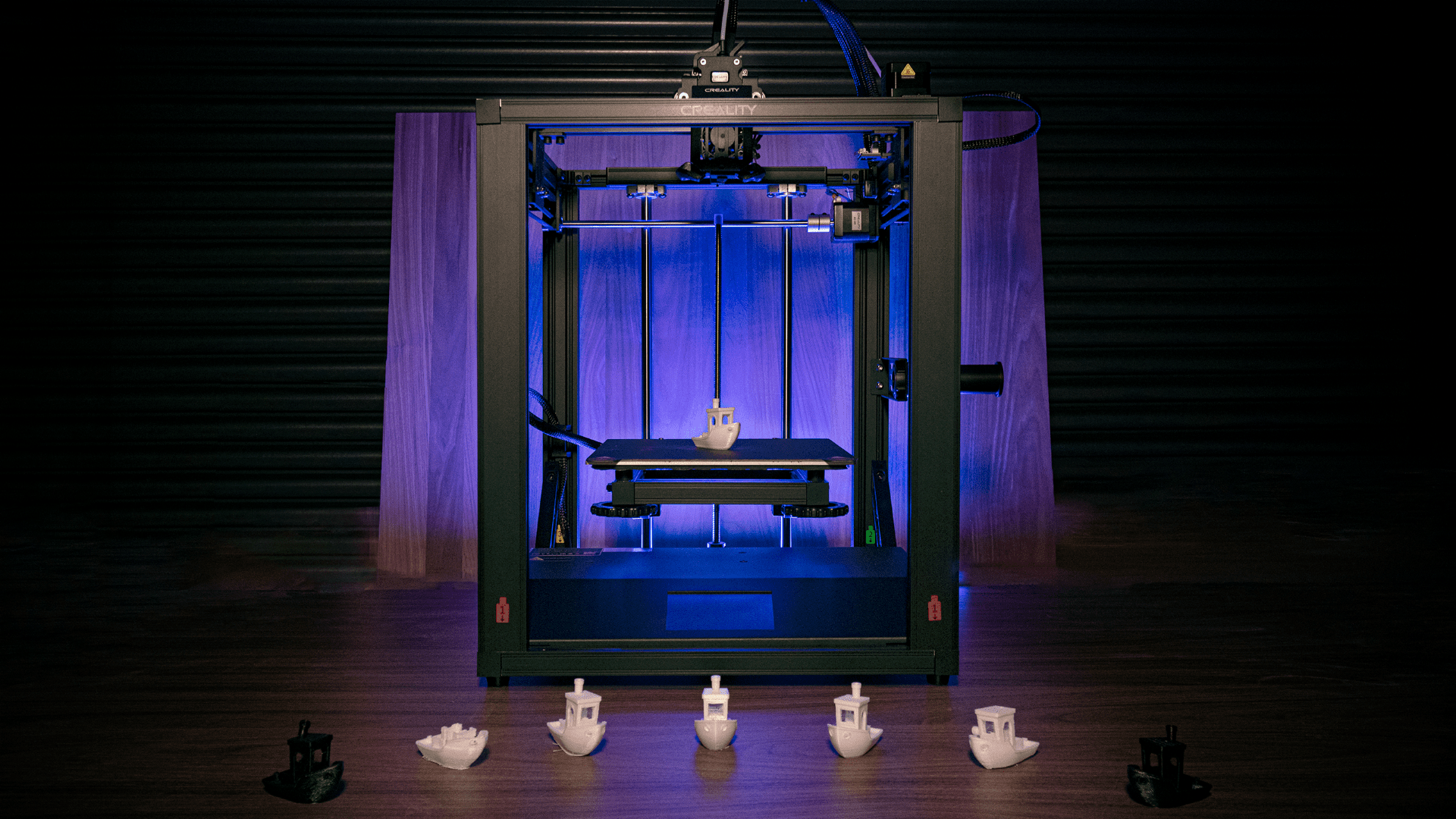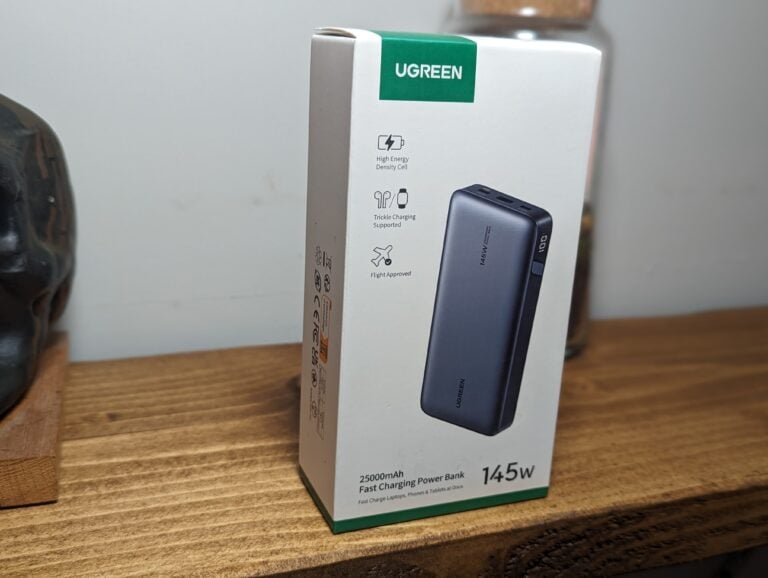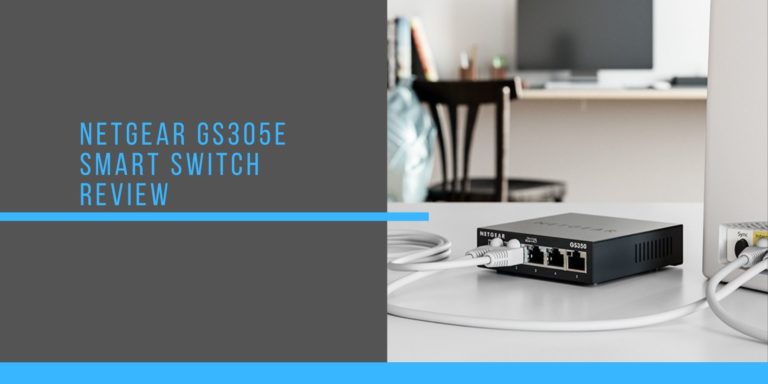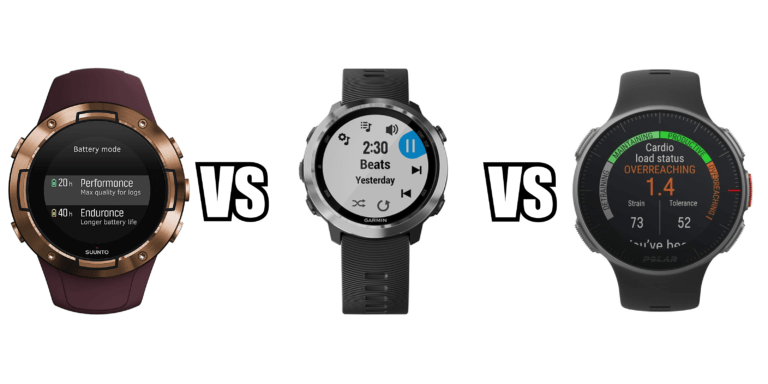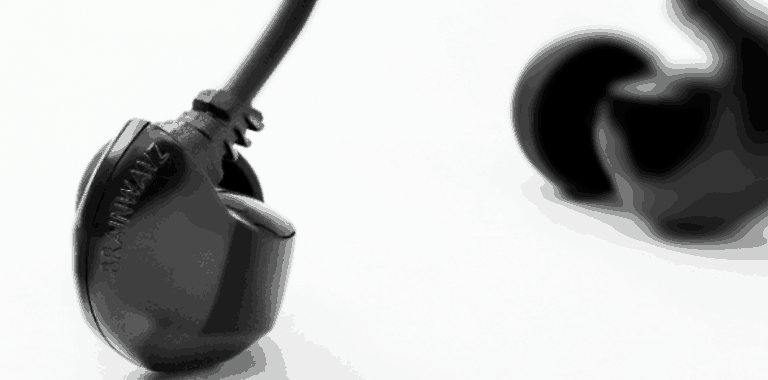Any links to online stores should be assumed to be affiliates. The company or PR agency provides all or most review samples. They have no control over my content, and I provide my honest opinion.
Creality has just released its third instalment of the Ender 5 series, the Ender-5 S1. Compiling all the best features of its predecessors, the S-1 looks pretty good. This machine boldly claims to print at speeds 5x faster than your average 3D printer, with acceleration up to 2000mm/s2, but is this actually a good thing?
Construction
The Ender-5 S1 is a standard Cartesian printer, with the printing platform moving in the z-axis; this offers some different pros and cons, which I will go through later. Because of this large cube frame design, constructing the printer is a little more complex, though the new standard of delivering printers semi-constructed is a massive plus. Saying this, users still require a large amount of space to unpack and construct this 425×460×570mm giant. Despite its size and the facade of complexity, the instructions explain simply how to assemble the Ender-5 S1.
Design
Despite almost being 0.5m3 in size, the Ender-5 S1 only has a marginally larger build volume than the Ender-3 S1. I will be comparing these two machines frequently in this review as they have very similar specs but about a £200 price difference.
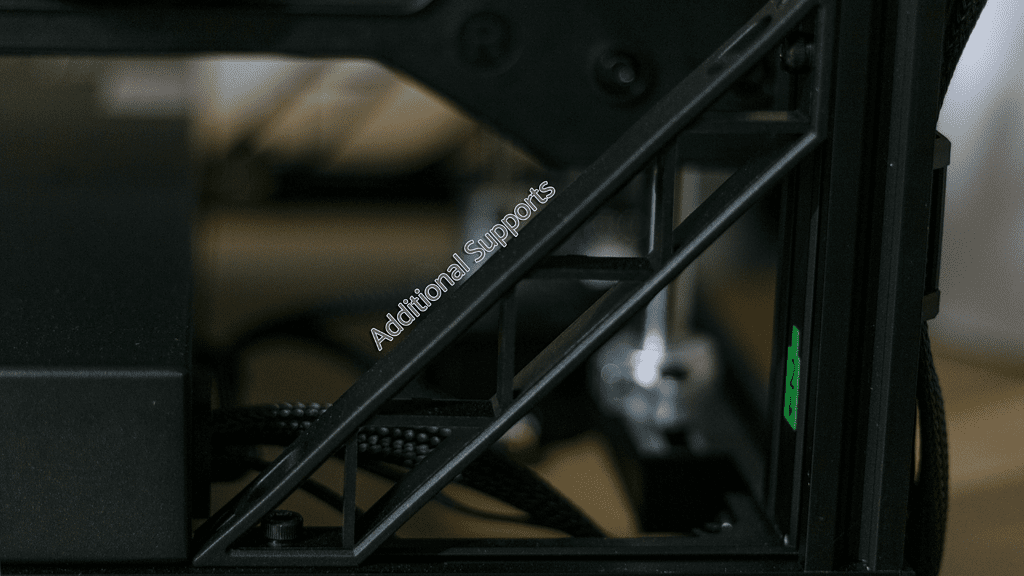
As the user constructs the printer, it is easy to see some of the additional supports added to help reinforce the structure against the forces created by the 2000mm/s2 acceleration. Additionally, there’s extra support to help the stability of the build platform, which is suspended from the back of the printer by a threaded rod and two linear rails. However, the platform is still only supported on one side, unlike the Ender-3 S1, which is supported by two linear rails at either end of the gantry.
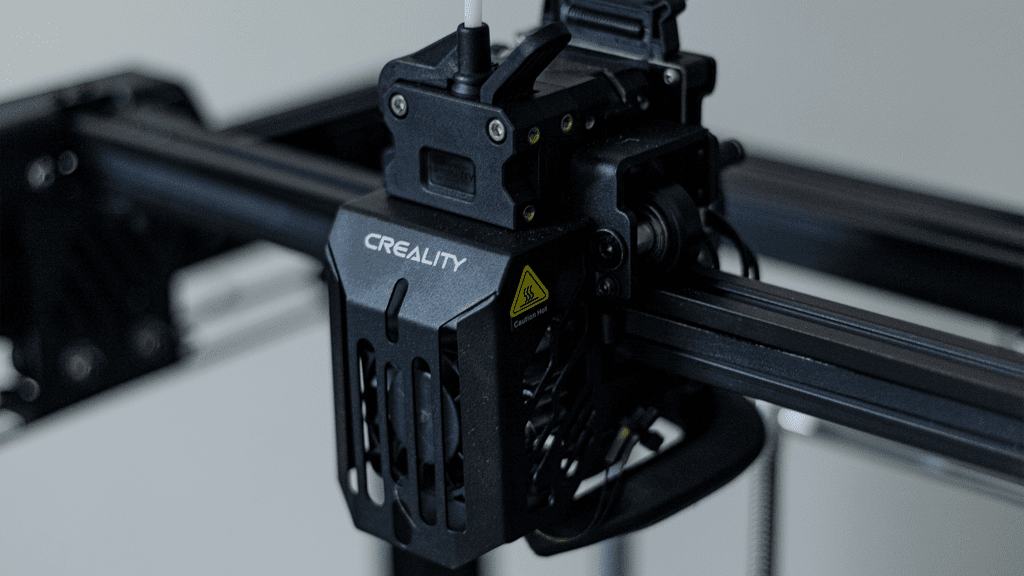
Having the printhead attached to the gantry at the top of the frame, only moving along the x and y axis, is what helps the Ender-5 S1 reach its impressive speeds.
Moreover, a pleasant quality of life addition made to the S-1 is the small touch screen used to control the device. This is becoming a standard feature of new 3D printers, and it’s good to see them. It helps the user navigate the controls easier and allows them to be displayed in a more accessible manner.
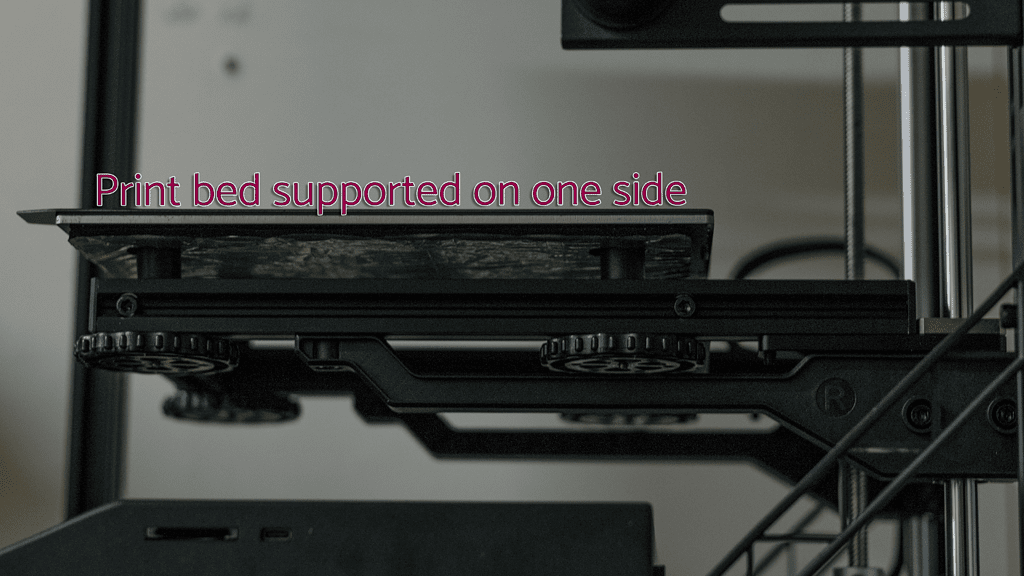
Upon the printing platform is a standard PC-coated magnetic spring steel base. You will have seen these before; nothing too interesting apart from the two notches cut out to line up with two screws, making it easier to put it back in the right spot. It’s a nice thought, but I’d still recommend replacing it with some other better material, like glass.
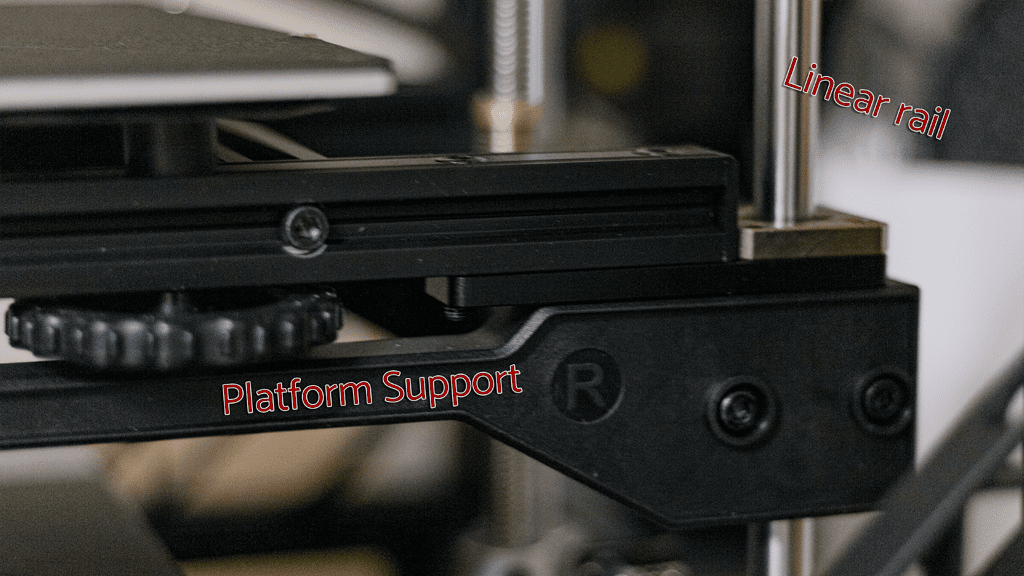
Direct Drive “Sprite” Extruder
Seemingly to become Creatlity’s new standard, The Ender-5 S1 has a Direct Drive extruder. Though, as I have mentioned in other reviews about this type of extruder, it comes with various pros and cons compared to its Bowden counterpart.
Firstly, a direct extruder can be smaller and supply more force than a Bowden design because of its proximity to the nozzle. By removing the distance and friction from the equation, the extruder can be smaller and lighter.
The proximity also allows for better filament retraction, helping improve the quality of prints overall.
There are a couple of drawbacks from a Direct Drive design, though. Firstly, having an extruder mounted to the printhead increases the weight of the moving parts. This means more force is required to move the printhead around and can cause artefacts in the print when using high acceleration.
Moreover, artefacts, errors, and other failures can occur from the weight of the spool being pulled along with the printhead. Because there is nothing to take the weight of the filament spool whilst the head is moving, it means all the weight gets applied to the head.
A Direct Drive extruder can be easier to produce for starter machines like the Ender-5 S1. But I’m not sure if it was actually the right choice for this style of printer.
Auto levelling
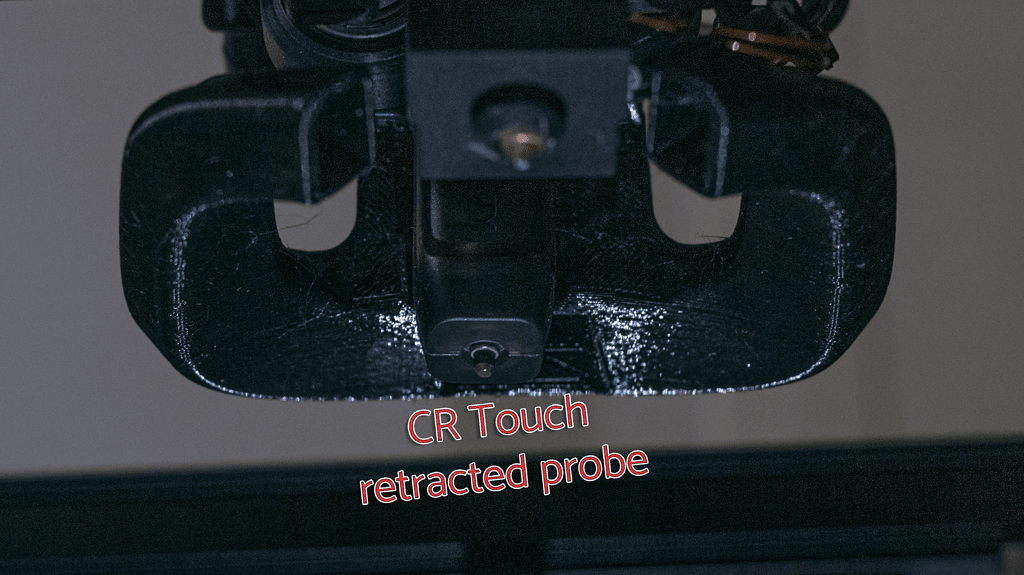
Auto levelling is becoming a standard feature of new 3D printers, but they all seem to use slightly different methods. However, Creality seem to have settled on the CR Touch auto-levelling system, personally one of my favourite methods.
The Ender-5 S1, like the Ender-3 S1, has a small deployable strain gauge probe to dictate the platform’s evenness. It does this by probing the surface of the printing platform in 16 places. This allows the printer to adjust for any discrepancies in the height whilst printing.
In addition, users can level the printer manually, using the dials in the corners below the platform. Making this process a little easier is a helpful feature that moves the printhead to all five zones on the print bed.
One final feature worthy of note is the ability to adjust the z-axis in increments of 0.05mm and 0.01mm. I had previously expressed my distaste for some other printers, which only provided the option of 0.05mm. Sometimes with this limitation, it was hard to get the level perfect.
Recommended Settings
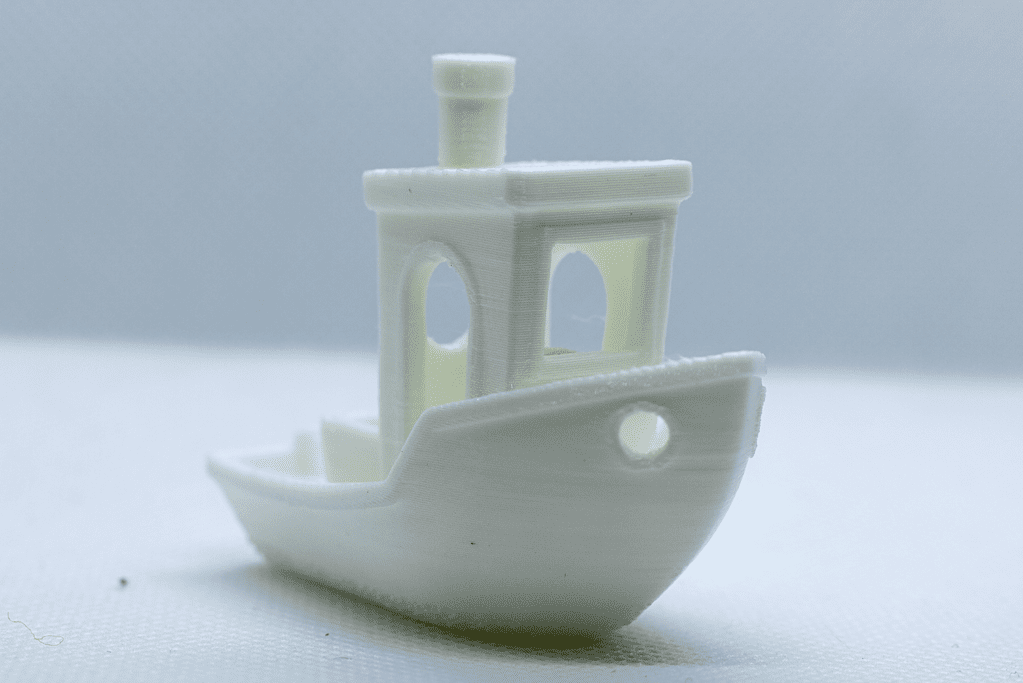
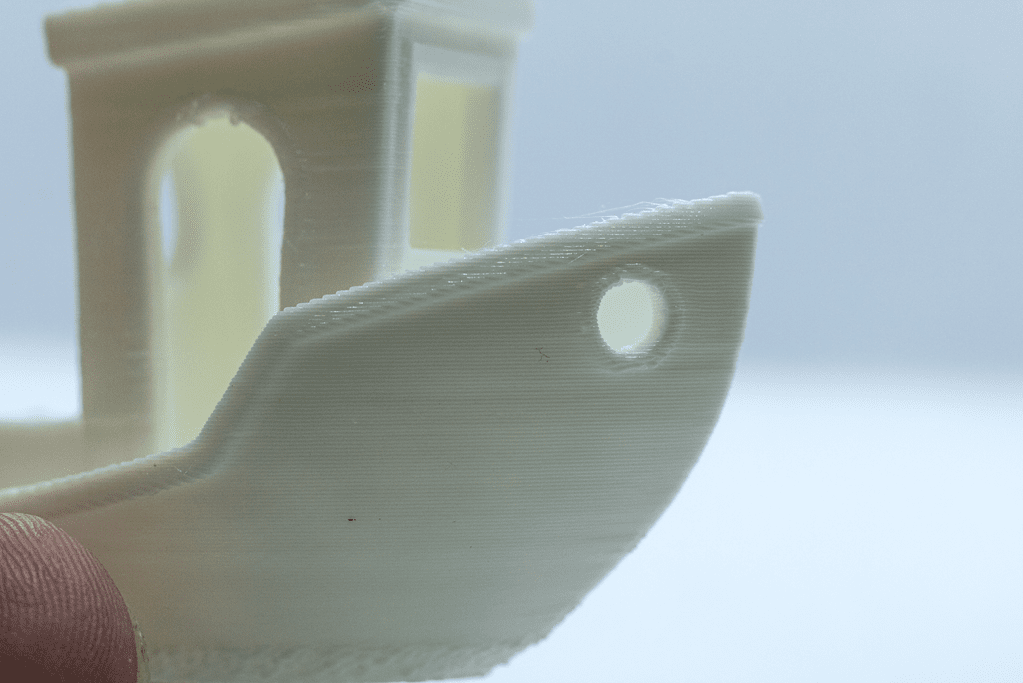
Accompanying all printers are recommended settings that allow the user to use the printer as it’s designed. Whenever testing printers I initially use these settings to understand how the machine works and handles problems. As per the instructions, the Ender-5 S1 can apparently print at 250mm/s, which is 5x faster than a standard printer and with an acceleration of 4x times than the Ender-3 S1. The print speed doesn’t mean too much, though, because a printer rarely reaches these speeds if they’re set too high. The most important parts of the “speed” of a printer are the acceleration and jerk (breaking) settings.
In my opinion, 2000mm/s2 is too fast for this printer simply because there is not enough support for the printing platform on the z-axis. The vibrations caused by the acceleration and rapid changes in movement cause the print platform to wobble and flex slightly. In addition, because of its size and weight, the whole platform acts like a tuning fork and puts ripples and ghosting throughout the print.
Initially, I was unsure if the errors were a filament-based issue, so I tried a different colour and temperature, which also yielded the same results. Another issue I found was the extruded lines of filament were very thin, and the model was overall very light, to the point where it was almost see-through.
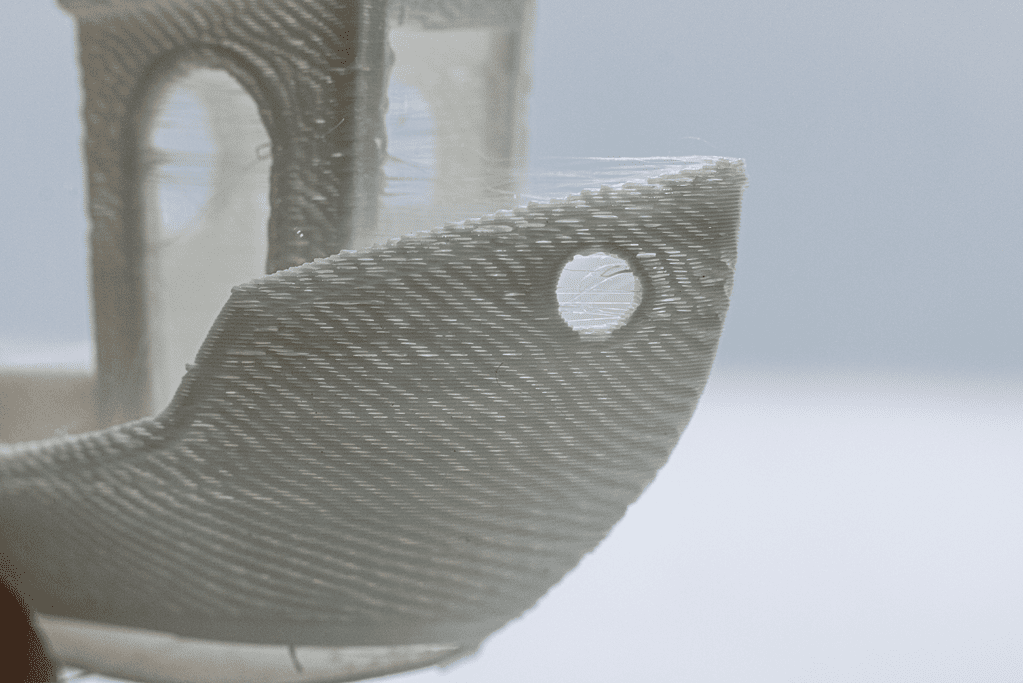
I attempted to combat this by printing at 120mm/s at 150% flow. Though on the outer walls, this seemed effective (they print at 80mm/s), on the infill and upper layers, the lines were still wafer thin.
Struggling to understand if this was a filament or extrusion-related issue, I used the G-code created for the Ender-3 S1. This has a print speed of 150mm/s and an acceleration of 500mm/s2.
As clearly displayed in these photos, the only main change in these two prints is the high acceleration, which negatively affects the print quality.
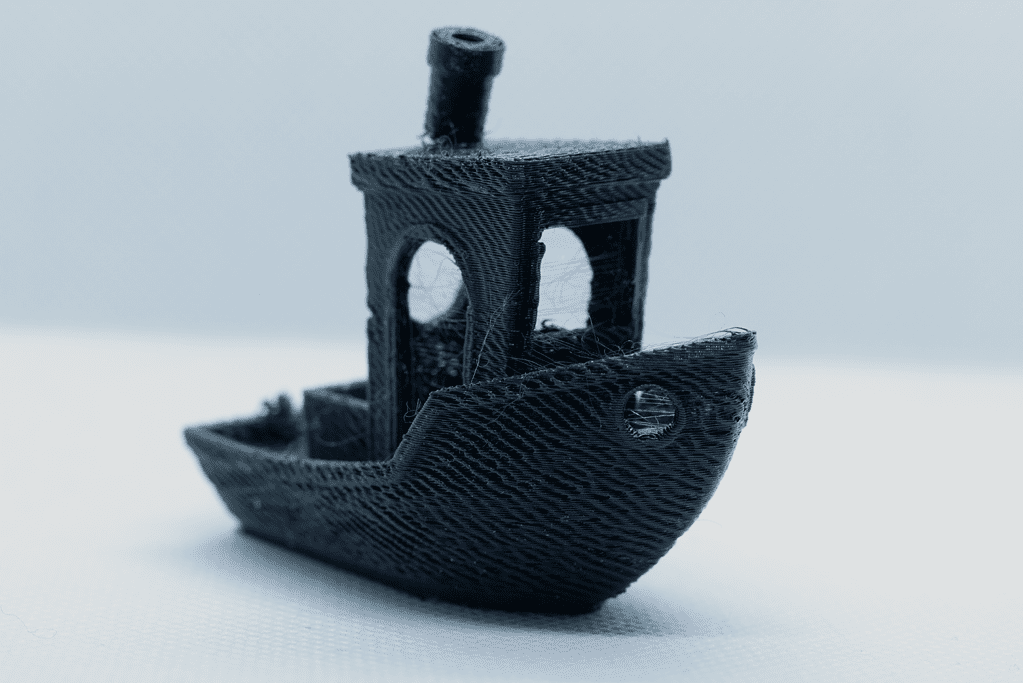
Price and Alternative Options
The Ender-5 S1 is available for £489, and you can buy it directly from Creality. In the US it is priced at $469.56.
Conclusion
Overall, the Ender-5 S1 is a good step in the right direction for the Ender Series. Upgrades to the heating chamber, auto levelling and UI are all fantastic, but is it worth it?
The Ender-3 S1 is smaller, cheaper, and lighter, with better settings and more expandability. I know which one I’d rather buy.
I’m Ted Culshaw, a dedicated professional adept in the realm of film, photography, and 3D design. As the brother of the chief editor at Mighty Gadgets, James, I’ve had the privilege of overseeing the reviews for a wide range of 3D printers and creative products, covering everything from photography to lighting. My academic background in film and photography, coupled with a brief stint in the TV industry, has provided me with a rich foundation in these fields, which I leverage to consistently deliver high-quality reviews.
In my current role at my father’s bespoke kitchen business, Culshaw Kitchen Makers, I am responsible for creating many of the 3D designs and CNC cutting, thereby directly contributing to the beauty and functionality of our handmade kitchens. I take immense pride in my work, and I am constantly seeking ways to improve and innovate.
Aside from this, my passion for photography and filmography extends beyond my professional life. I regularly offer freelance services to local businesses, using my skills to help them elevate their visual presence and narrate their unique stories.
At heart, I am a passionate professional who believes in the transformative power of creative design and visual storytelling. Whether it’s through reviewing the latest 3D printer or crafting a bespoke kitchen design, I am committed to delivering excellence in all my endeavours.
You can find me on Instagram

